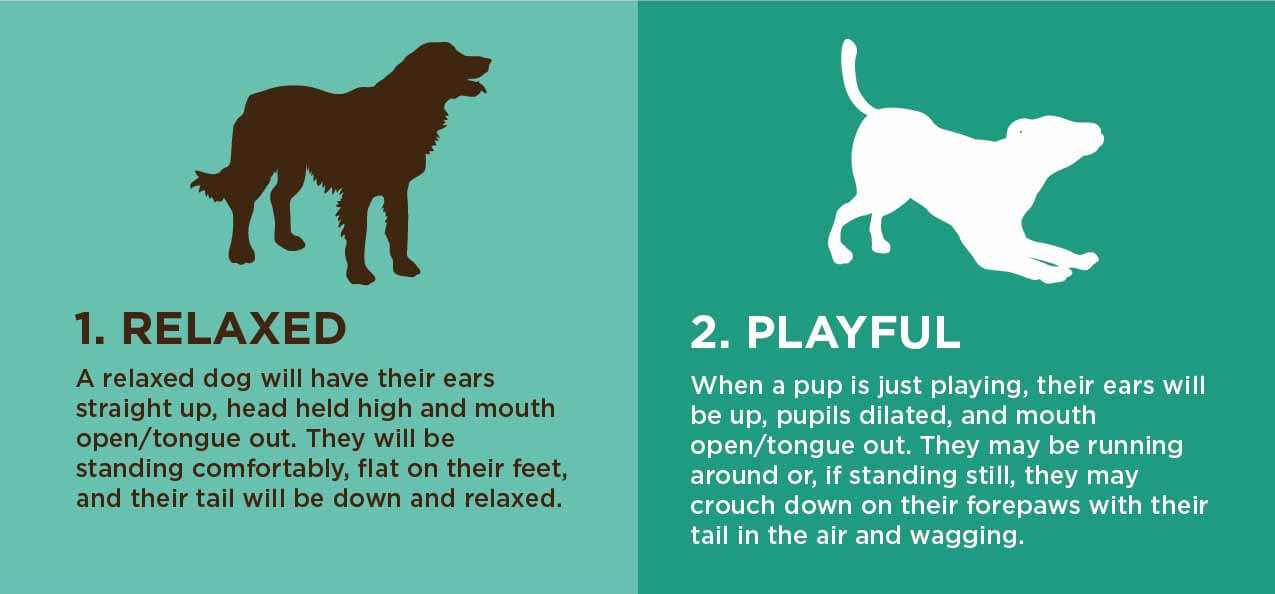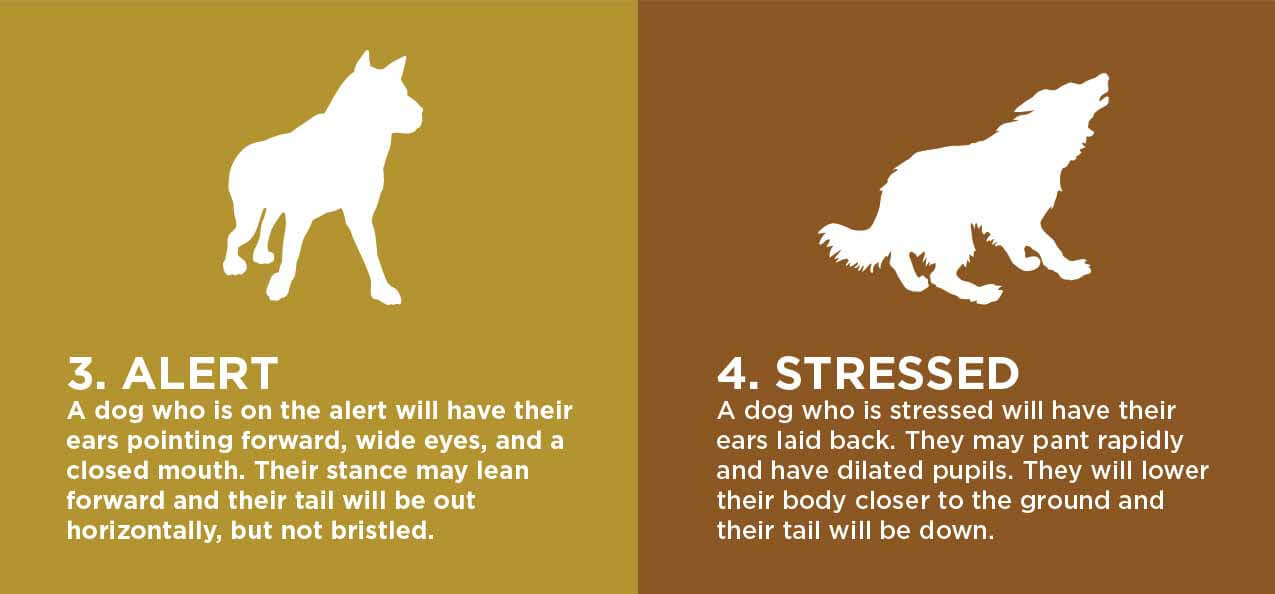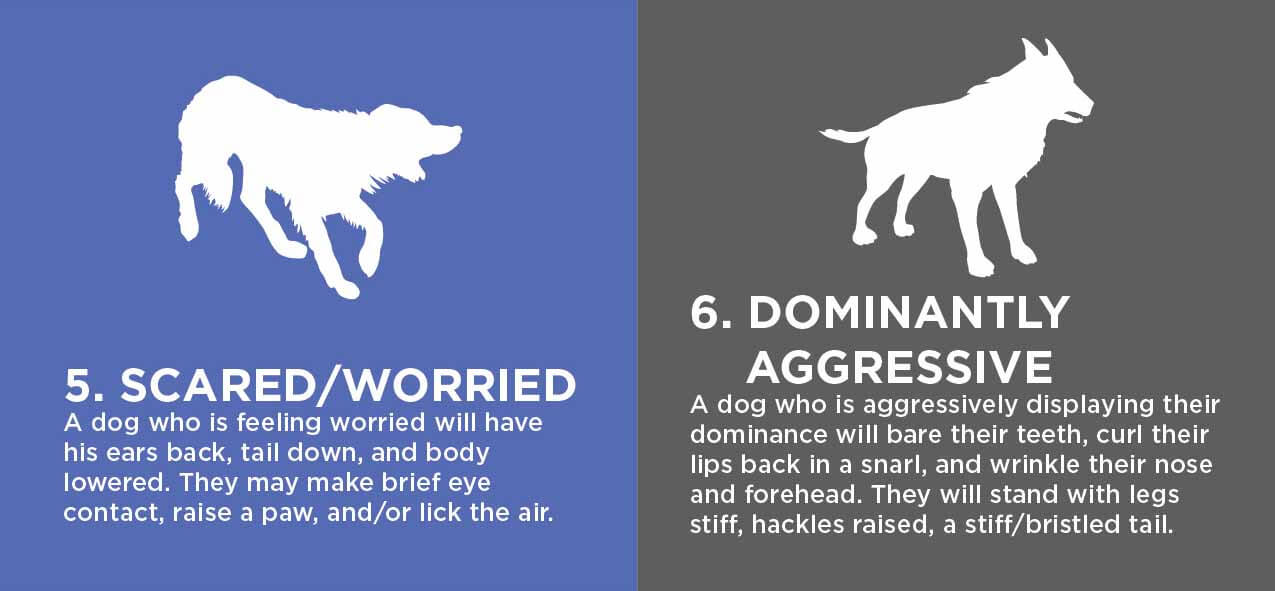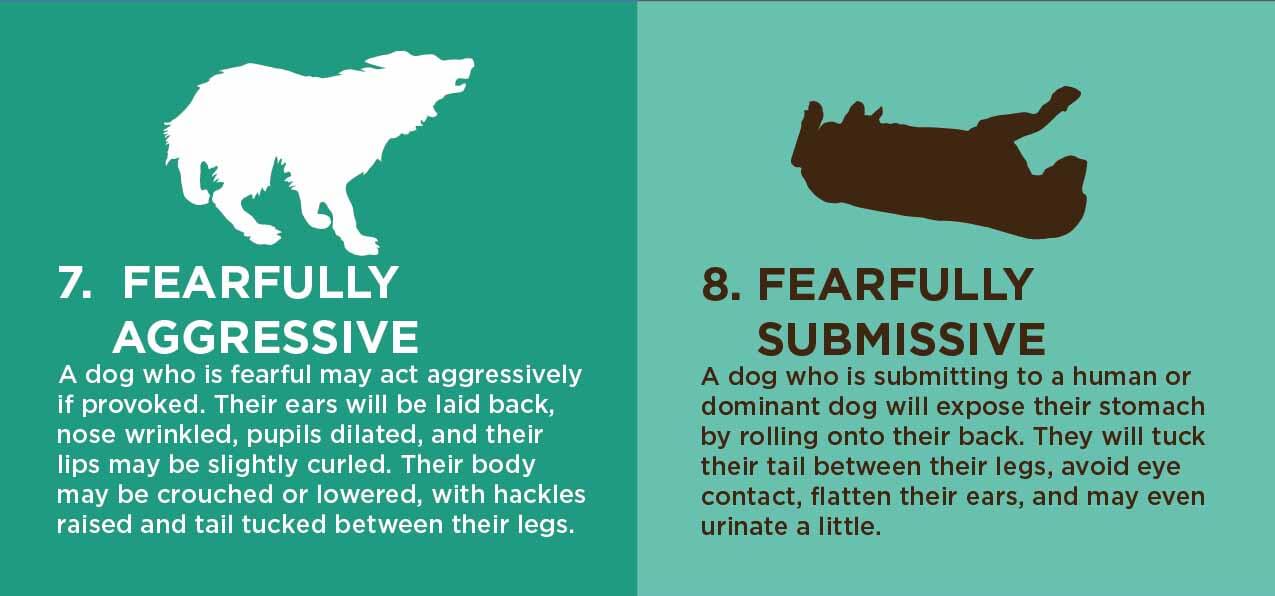
Always know how to read a dog’s body language in order to avoid dog bites. Below are 8 different examples of a dog’s body language which will give you tips on how the dog is feeling.

1. Relaxed: A relaxed dog will have their ears straight up, head held high and mouth open/tongue out. They will be standing comfortably, flat on their feet, and their tail will be down and relaxed.
2. Playful: When a pup is just playing, their ears will be up, pupils dilated, and mouth open/tongue out. They may be running around or, if standing still, they may crouch down on their forepaws with their tail in the air and wagging.

3. Alert: A dog who is on the alert will have their ears pointing forward, wide eyes, and a closed mouth. Their stance may lean forward and their tail will be out horizontally, but not bristled.
4. Stressed: A dog who is stressed will have their ears laid back. They may pant rapidly and have dilated pupils. They will lower their body closer to the ground and their tail will be down.

5. Scared/Worried: A dog who is feeling worried will have his ears back, tail down, and body lowered. They may make brief eye contact, raise a paw, and/or lick the air
6. Dominantly Aggressive: A dog who is aggressively displaying their dominance will bare their teeth, curl their lips back in a snarl, and wrinkle their nose and forehead. They will stand with legs stiff, hackles raised, a stiff/bristled tail.

7. Fearfully Aggressive: A fearful dog may act aggressively if provoked. Their ears will be laid back, nose wrinkled, their pupils dilated, and their lips may be slightly curled. Their body may be crouched or lowered, with hackles raised and tails tucked between their legs.
8. Fearfully Submissive: A dog who is submitting to a human or dominant dog will expose their stomach by rolling onto their back. They will tuck their tail between their legs, avoid eye contact, flatten their ears, and may even urinate a little.
Related post: 6 Tips To Safely Approach an Unfamiliar Dog


I can’t thank Jeremy, Nicole, and Andrea enough for the way they handled my case. After my car accident, I felt overwhelmed and unsure of what to do, but their team stepped in with confidence, compassion, and clear communication every step of the way.
They explained things in a way that actually made sense, fought hard to make sure I was treated fairly, and never made me feel like just another case number.
If you’re looking for attorneys who actually care and know how to get things done — these are your people